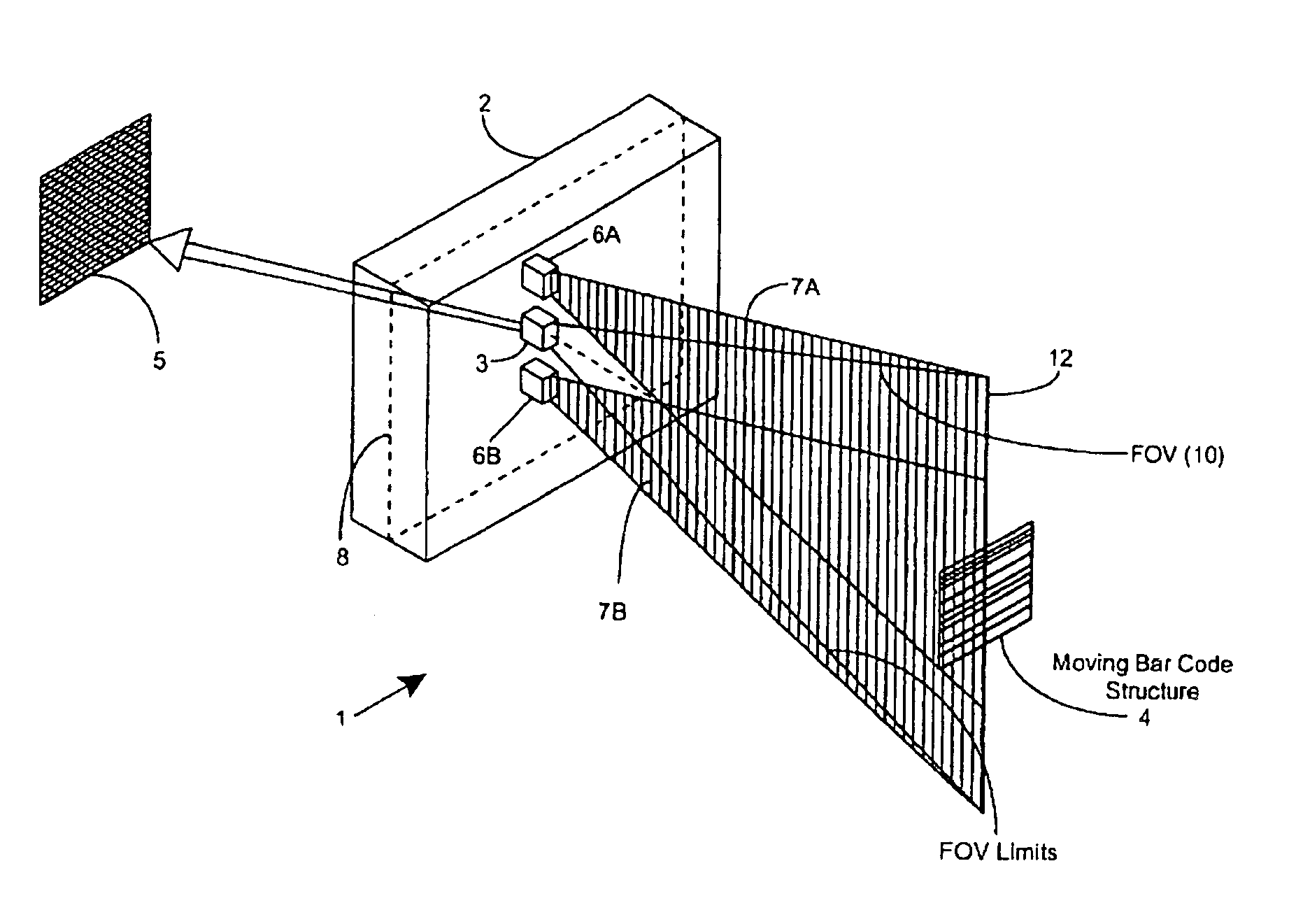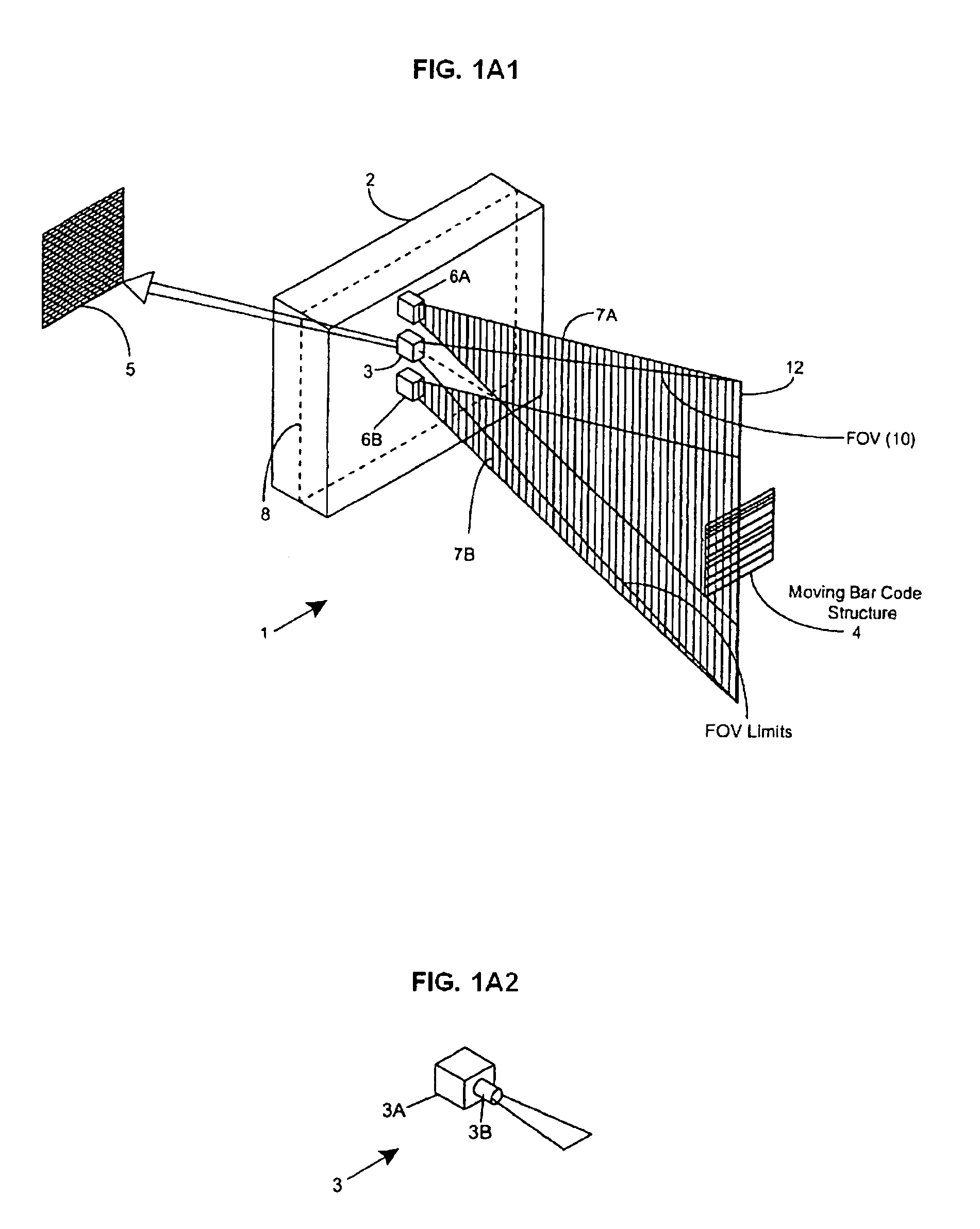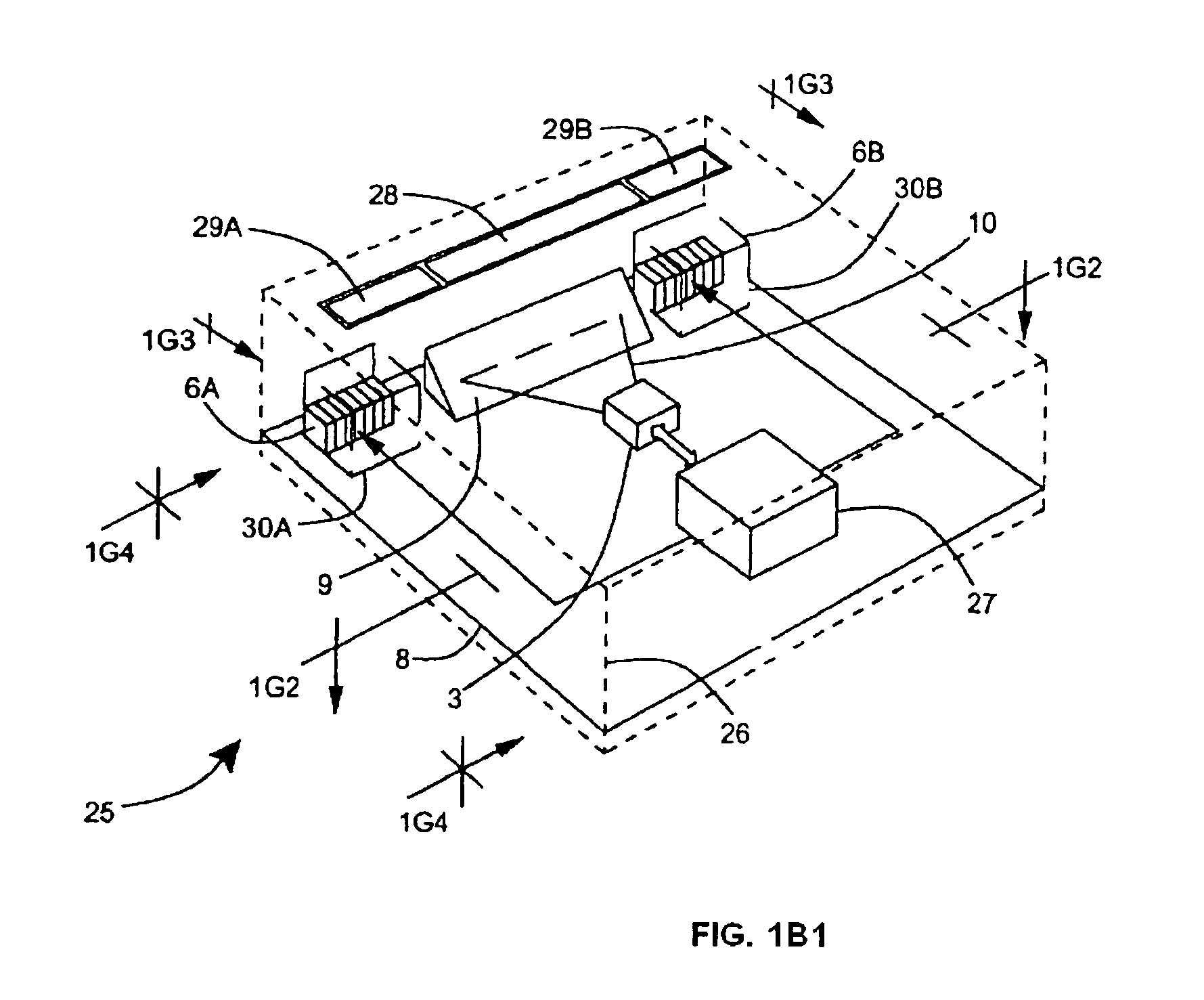Method of and system for profile equalization employing visible laser diode (VLD) displacement
a technology of visible laser diodes and profiles, applied in the field of profile equalization using visible laser diodes, can solve the problems of large, heavy and expensive, and the balance of output illumination power is simply wasted in the form of heat, and the cost of such scanning devices is increased. size and weight, and the effect of increasing the size and weight of the scanning devi
- Summary
- Abstract
- Description
- Claims
- Application Information
AI Technical Summary
Benefits of technology
Problems solved by technology
Method used
Image
Examples
Embodiment Construction
[0045]Referring to the figures in the accompanying drawings, the preferred embodiments of the method of and system for profile equalization employing visible laser diode (VLD) displacement of the present invention will be described in great detail, wherein like elements will be indicated using like reference numerals.
1. Overview of the Planar Laser Illumination and Electronic Imaging (PLIIM) System of the Present Invention:
[0046]In accordance with the principles of the present invention, an object (e.g. a bar coded package, textual materials, graphical indicia, etc.) is illuminated by a substantially planar laser illumination beam having substantially-planar spatial distribution characteristics along a planar direction which passes through the field of view (FOV) of an image formation and detection module (e.g. realized within a CCD-type digital electronic camera, or a 35 mm optical-film photographic camera), while images of the illuminated object are formed and detected by the imag...
PUM
 Login to View More
Login to View More Abstract
Description
Claims
Application Information
 Login to View More
Login to View More - R&D
- Intellectual Property
- Life Sciences
- Materials
- Tech Scout
- Unparalleled Data Quality
- Higher Quality Content
- 60% Fewer Hallucinations
Browse by: Latest US Patents, China's latest patents, Technical Efficacy Thesaurus, Application Domain, Technology Topic, Popular Technical Reports.
© 2025 PatSnap. All rights reserved.Legal|Privacy policy|Modern Slavery Act Transparency Statement|Sitemap|About US| Contact US: help@patsnap.com



